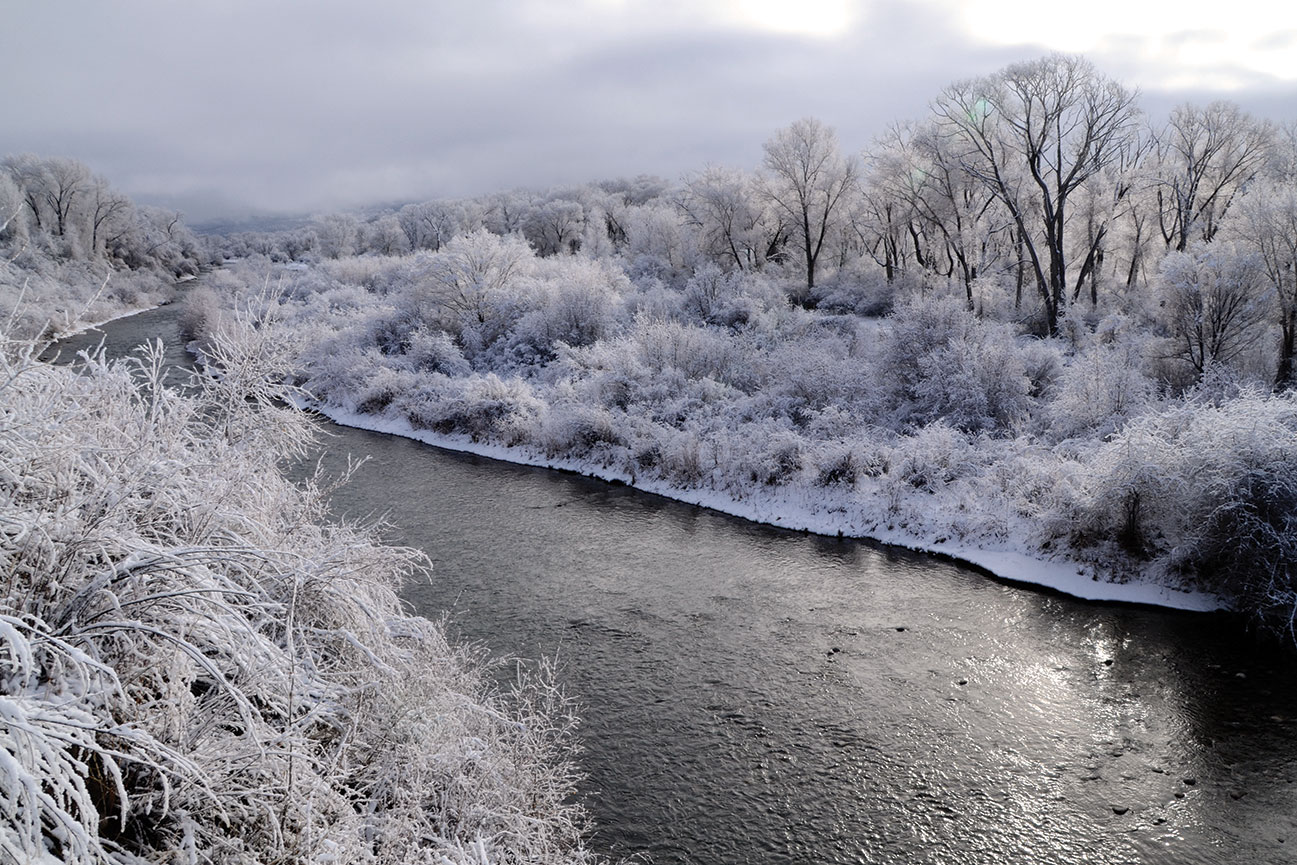The Water Resources Division staff of the Southern Ute Indian Tribe’s Department of Natural Resources recently enjoyed the opportunity and privilege of interviewing Chairman Clement Frost about the Tribe’s historic struggle for recognition of its water rights.
Chairman Frost learned the importance of water as a young boy of ten when he began helping his father irrigate the family’s allotment. The Frosts grew alfalfa, wheat, and oats on fields irrigated by the Pine River Indian Irrigation Project (PRIIP). The grain from their wheat and oats was processed at Graden’s Mill in Durango at the site of the current Albertson’s grocery store. Sales of these crops as well as hay and alfalfa provided the family’s main source of income. In those days, in contrast to current times, the PRIIP was well maintained, ensuring the delivery of irrigation water to Tribal lands along the Pine River corridor.
“I remember we had good crop production back then, and the BIA took good care of the ditches,” the Chairman said.
“The fight to have the Southern Ute’s water rights recognized goes way back before my time on Tribal Council – goes back to all the chairmen that I know of who have gone to the hills, so to speak. When they put us on this reservation, there was a promise that we would be provided water to our lands, Frost said. “When I got involved in the 1980s, we started work to have our water rights confirmed by the United States government. We hired specialists to determine how much land the Tribe had that could be productive if water were delivered. A study of irrigable acreage as well as water available from the seven rivers on the reservation resulted from this work. The late Leonard C. Burch and the late Chairman Chris A. Baker spearheaded the fight to have the Tribe’s water rights confirmed. Mr. Burch made many trips to the Hill and presented the information developed from the study to Congress. By working with the local community and other water users, the Tribe gained the support of then-Governor Romer.”
The Colorado Ute Indian Water Rights Settlement Act of 1988 was signed in Denver by Southern Ute Tribal Chairman Chris Baker and Ute Mountain Ute Tribal Chairman Ernest House, Sr. President Ronald Reagan signed the bill into law after it passed the House and Senate on November 3, 1988.
Current and past Southern Ute Tribal leaders fought hard to have the Tribe’s water rights legally settled and quantified because they knew, as Chairman Frost says, “land without water is just dirt and dust.”
The Chairman stated that it is very important that younger tribal members understand that their elders did not receive per-capita checks when they were growing up, and that they had to survive by helping each other. Hay was cut and raked with horse and mule teams, loaded onto wagons with pitchforks, and piled using derricks. This much labor required neighbors to work together to secure their harvests, and he recalls his father working from dawn to dusk on the farm. His father’s generation was dedicated to caring for the land, and many elders viewed water as the most important resource the Tribe possessed, as life is not possible without water. “Sometimes we take water for granted, but from now on water is going to become more important to the Tribe as well as the rest of the people on Earth” said Frost.
It is essential to care for Tribal lands for future generations, and this goal is not possible without a fully functioning PRIIP capable of properly delivering water to Tribal lands. Chairman Frost has witnessed the PRIIP slowly descend into disrepair since the last major rehabilitation projects were completed in the early 1960s. He has also seen operation and maintenance fees collected by the BIA increase even as water delivery to Tribal lands has decreased.
“Young people need an incentive to become involved in farming and return idle lands to production. My motivation was raising horses,” the Chairman recounted with a smile.
His father had a prized thoroughbred stud, Ginger, whose descendants still are to be found on the reservation. Mr. Frost broke his own horses as a young man and still enjoys riding. He understands that for tribal youth to become interested in agriculture, there must be an economic return.
Frost cited the example of the neighboring Ute Mountain Ute Tribe.
“They’re using their water wisely and developing their land,” he commented.
He believes the Southern Utes could do the same with support from the membership and Tribal Council. The Chairman said he would enjoy hearing from tribal youth and other members who would like to rehabilitate the PRIIP and do their part in caring for the land and water for the benefit of generations to come.

